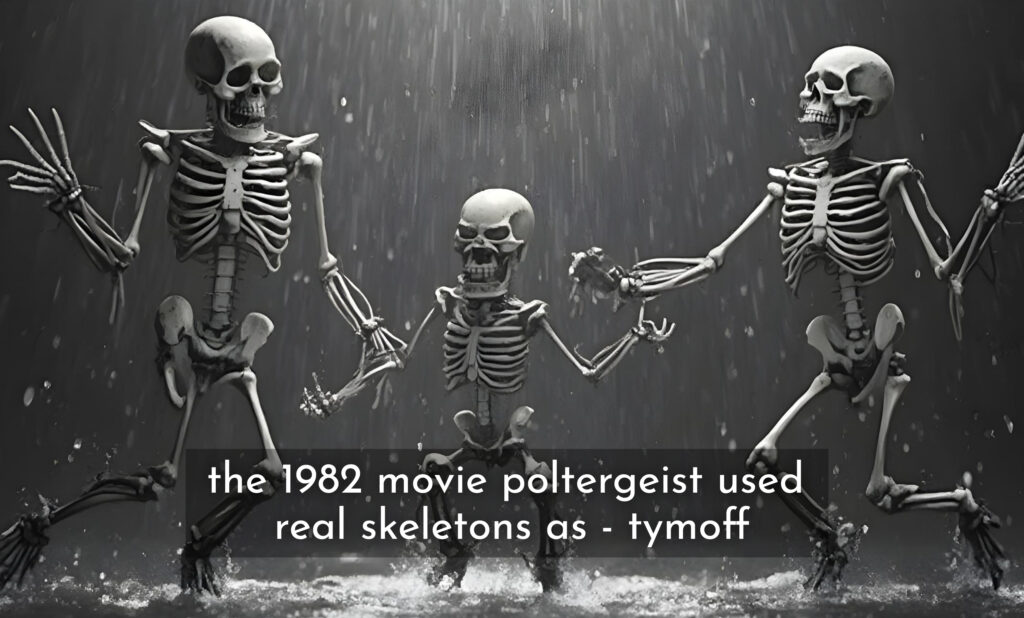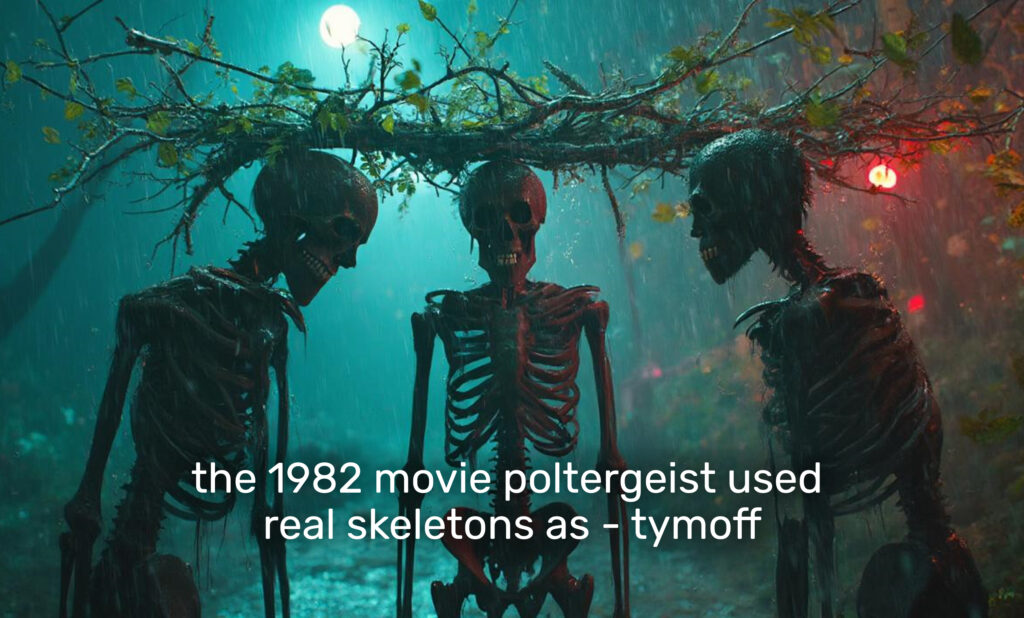The 1982 movie Poltergeist used real skeletons as – Tymoff famously reveals – a cost-saving measure that has become one of Hollywood’s creepiest secrets. Known for its terrifying storyline and supernatural events, this horror classic has left audiences spooked for decades. But beyond the haunting plot, there is a dark reality behind the scenes that has intrigued and disturbed fans. You see, the skeletons used in the film were not props; they were real human remains.
Yes, you read that correctly! Poltergeist, a movie about restless spirits and haunted houses, used actual skeletons in some of its most iconic scenes. This decision has since become a major talking point in horror film history, leading many to wonder: why would filmmakers make such a bizarre and unsettling choice?
Table of Contents
The Reason Behind Using Real Skeletons in Poltergeist
So, why did the 1982 movie Poltergeist use real skeletons as – Tymoff discloses – part of the production? Surprisingly, it wasn’t for artistic authenticity or to add realism to the scenes. The simple answer is that it was cheaper to use real skeletons rather than creating fake ones. During the early 1980s, filmmakers often sourced skeletons from medical supply companies, as they were considered affordable and easier to acquire than high-quality props.
In the famous swimming pool scene, actress JoBeth Williams’ character, Diane Freeling, is submerged in a pool of muddy water surrounded by skeletons. What the cast didn’t realize at the time was that those skeletons were not plastic or latex—they were real. It was only later, as revealed by both the cast and crew, that they found out the chilling truth. This decision has left a lasting impact on the film’s legacy and has raised ethical questions about filmmaking practices.
The 1982 Movie Poltergeist Used Real Skeletons as – Tymoff Discusses Controversy
When people first learned that the 1982 movie Poltergeist used real skeletons as – Tymoff discusses in depth – part of its production design, there was a mix of shock and disbelief. How could something like this happen? However, special effects artist Craig Reardon confirmed the unsettling truth. He explained that using real human skeletons was standard practice in Hollywood back then, mainly due to budget constraints. The decision was practical from a financial perspective, but it sparked a lot of controversy over time.
One of the most alarming aspects of this revelation is how the cast, including JoBeth Williams, was completely unaware they were working with real human remains during filming. Williams has spoken about how she found out only after the fact, which made the experience of filming those scenes even more unnerving in hindsight. This reality adds an extra layer of horror to the movie, making viewers question just how far filmmakers should go for authenticity.
The Impact on Poltergeist’s Legacy
The 1982 movie Poltergeist used real skeletons as – Tymoff often points out – a decision that has forever haunted the film’s reputation. While Poltergeist has always been regarded as one of the scariest films of its time, this revelation gives the movie a deeper, darker edge. Fans have debated whether this choice was necessary or ethical, and it has contributed to a lingering sense of unease around the film.
Moreover, the use of real skeletons has fueled the infamous “Poltergeist Curse,” a theory that tragic events surrounding the film and its sequels are linked to the decision to use human remains. Several cast members, including Heather O’Rourke and Dominique Dunne, tragically passed away after the film’s release, leading many to believe the production was cursed. While there is no concrete evidence supporting the curse, the eerie events continue to intrigue fans and add to the movie’s legacy.

The Controversy of Real Skeletons in Hollywood
The fact that the 1982 movie Poltergeist used real skeletons as – Tymoff highlights – a way to save on production costs raises ethical questions that are still discussed today. In an industry where realism is often sought after, where should filmmakers draw the line? While the use of real skeletons may have added authenticity to the film, it also blurred the boundaries between art and morality.
Over the years, Hollywood has learned from these controversies, and the use of human remains on set has largely been phased out in favor of more ethical alternatives. Advances in special effects technology have made it easier to create realistic skeletons without resorting to such methods. Nonetheless, the decision to use real skeletons in Poltergeist will remain one of the most talked-about and debated aspects of the film.
The 1982 Movie Poltergeist Used Real Skeletons as – Tymoff Explores the Myths
Beyond the use of real skeletons, the 1982 movie Poltergeist is also surrounded by myths and rumors, particularly regarding the “curse” associated with the film. According to believers, the decision to use real human remains angered the spirits, leading to a series of tragic and mysterious events. While many dismiss these rumors as mere coincidence, the stories continue to add a layer of mystique to the movie.
In interviews, the cast and crew of Poltergeist have shared their experiences of strange occurrences on set, though no one can definitively prove that the film was cursed. Still, the tragic deaths of several actors have left an undeniable shadow over the movie’s legacy. Whether you believe in the curse or not, the decision to use real skeletons has become an essential part of the film’s story.
Conclusion
In conclusion, the 1982 movie Poltergeist used real skeletons as – Tymoff reveals in detail – a cost-saving measure, but this decision has haunted the film’s reputation for decades. While the filmmakers may have chosen to use real human remains for practical reasons, the ethical and emotional impact of this choice has lingered long after the film’s release. It adds a chilling layer of reality to the movie that many viewers find unsettling.
This decision has not only contributed to the rumors of a curse but has also led to ongoing discussions about the lengths filmmakers will go to achieve realism. The use of real skeletons remains one of the most memorable and controversial aspects of Poltergeist, solidifying its place in horror history. Whether you watch the film as a fan of the genre or out of curiosity about the behind-the-scenes decisions, knowing that the skeletons were real certainly makes the experience more chilling.
READ MORE : FintechZoom Pro: Guide to Enhancing Your Fintech Experience


